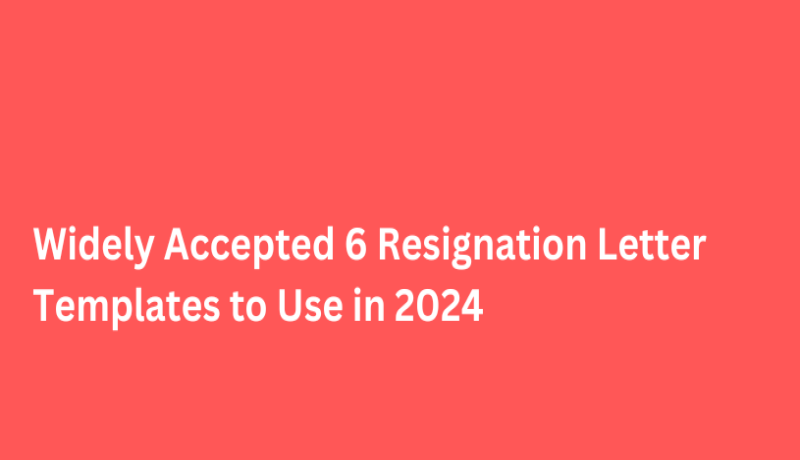15 Executive Resume Mistakes You Should Fix Today
Resume for an executive is a key piece of marketing material, perhaps the most valuable piece of document to showcase decades of achievements summarized into less than two pages.
When creating an executive resume, think about the two key audience for whom it was created – Recruiters/ Search Consultants and other C-Suite Executives.
There are certain set of information both groups expect from your resume. From the right choice of words to keeping it elegantly plain and simple, your resume is a direct reflection of yourself.
Here are 15 resume enhancements every senior executive should make on their resume, today.
1) Mentioning Career Objective
Writing Career Objective on a resume has become obsolete. The senior executives who view your resume have no interest in reading that clunky text. In fact, that is taking prime real estate on your resume adding little value to the viewer.
Consider replacing Career Objective with Last Five Years Achievements - catchy bullet points that triggers curiosity and conversations. You could say something like ‘Achieved 18% YoY growth’ or ‘Improved profit margin by 8%’.

Instead, if you insist on having Career Summary, make sure it doesn’t go beyond three lines split into a maximum of two sentences.
For example:
“A highly successful global executive with proven success in leadership, innovation, strategy, transformation and growth with public listed and private companies. Credible leader that adapts with evolving business landscape delivering exceptional value for shareholders, customers and employees “
2) Detailing your experience prior to 2005
What you did 15 years ago is of little relevance today. Technology, business landscape, ways of working, business strategy and external environment has considerably changed for every industry over the years.
Instead, optimize your resume to add more details on what you achieved in the last 5 years and current job.In the case of executive hiring, your resume doesn’t land on the client’s table by accident. They already know you or they wanted to meet you in the first place.
3) Stretching resume to more than two pages
As a senior executive, your resume will be viewed by other senior executives. They don’t prefer to go through a resume that is any longer than two pages.
Best practice is to have 5-6 bullet points for the current and immediate previous job. Then, 3-4 bullet points for the preceding two jobs and bring it down as you go back in the chronological order.
4) Mentioning only responsibilities and not achievements
Your resume’s target audience is aware of what a CEO, CFO, COO or for that matter any senior executive would be responsible for. What they need to see is your achievements and how you achieved it.

5) Poor resume template and formatting
Your resume creates a first impression about yourself. They have heard about you, but this is the first document coming from yourself. You give them something that you have written.
If you use a “free-download” version found on the internet, used by junior level folks, then you are giving a poor first impression about yourself. Never use free resume templates from the internet. If you need an elegant executive resume template, buy one. It’s worth the $30 dollars you invest in creating a document about yourself.
Non-aligned text, tables or other formatting issues doesn’t give a pleasant reading experience to the viewer. Choosing an informal font or unprofessional layout will put you in poor light. Best fonts for resume are Times New Roman, Arial, Verdana or Calibri.
6) Lack of numbers and story
Every senior executive is expected to give quantifiable and verifiable data about their current and past jobs. If you are a CEO of a public listed company, then highlight your success stories.
Few examples:
- How did you increase share value?
- How did you improve profit margin?
- How much did the market cap increase under your leadership?
- How did a new investment bring about savings?
- Which new markets did you enter?
Your resume should tell a story. Numbers always resonate well with the senior interviewers. This could be for all C-Suite roles and not just a role that deals with numbers, for example a CFO.
7) Grammatical errors, typos, and formatting issues
Sandy, a client partner with a top-tier search firm says “After 20 years in the industry, I still cannot believe the number of grammatical errors and typos I see on the resume of senior executives. That kind of puts me off on my impression about the candidate”.
Grammatical errors, typos and formatting issues in executive resumes are for real. Read and re-read your resume. Consider submitting your resume for a confidential review to identify issues in your resume. An extra pair of eyes is always good.
Never send your executive resume for free resume evaluation.
Use the same type of font and same size for content body and heading. Do not put upper case unnecessarily. If you wish to draw attention to a specific word or phrase, you can put in bold but should not be across the resume.
8) Sharing resume over email
Never email your resume. You never know where it ends up and who reads it. This is a grave danger if you are discreetly looking out or would create problems if your current employer finds out you are looking out.
Use a resume sharing and tracking services created for senior executives like www.c-suitecvsecure.com . You will know Who viewed your resume, When and How many times.
9) Revealing too many personal details
The only personal details you should reveal on your resume are your email ID and mobile phone number. Any other form of identity details, physical details, residence location, or photo (unless you are in Europe) are a strict no-no.

10) Too much attention to key words
People generally advise to fill your resume with key words. As a senior executive, it does not make much of a difference because of how the executive search process works. The people who would interview you already knows who you are to a great extent.
And your resume need not be in a database to be found. Key words are generally for Application Tracking Systems (ATS). Most senior executive resumes are not sourced from ATS.
Executive search firms are good at finding you even if you don’t have an online presence.
11) Not including a LinkedIn link
Your prospective employer and interviewers would want to know you beyond what is written on your resume. Putting a LinkedIn link on your resume will help them see common connections, recommendations, what you liked and your posts.
It is ideal to mention the LinkedIn link at the bottom of the page lest they get distracted.
12) Revealing confidential information about current or previous employers
Never mention your sales achievements, P/L size (unless it is a public listed company which reveals that data) or any form of confidential client data on your resume. This gives away the message that you have integrity issues and can’t be trusted with confidential data with the new employer as well.
13) Inconsistencies, Lies and Exaggeration
If you are a senior executive, chances are that you were headhunted by an Executive Search firm. Did you know that they have spoken about you to at least 2 different industry sources before putting you in front of the client?
These are not formal reference checks. The client partners or consultants leverage their network to obtain confidential performance data about you. So, if you think you can lie about an achievement or mention something you haven’t done at all, you are putting yourself on the line.
Yahoo CEO, Scott Thompson was fired because he lied about his college degree on his resume.
14) Creating in Microsoft Word and not PDF
Creating a Microsoft Word version of your resume gives way for possible edits by third parties. PDF format is a trusted way to send your resume to recruiters and prospective employers.
15) Explaining snippets about current and past organizations
If you are a senior executive, then you don’t need to mention a brief about each of the organizations you worked with, current and past. Your prospective employer has been thoroughly briefed by the executive search consultant about your previous organizations or they themselves know it.
As a part of the executive search process, before you were even contacted, the search consultant and the company has gone through your name and public profile several times over.
Here are top 6 Executive Resume templates recommended by Executive Search professionals:
https://executiveresume.c-suitecvsecure.com/
Here's the perfect example of an executive resume - Buy this template







